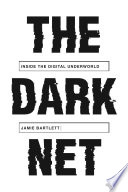

The Dark Net refers to a part of the internet that is not indexed by traditional search engines and requires specific software to access. This includes the use of anonymizing tools like Tor, which allows users to browse the web without revealing their identity. The book explains how the Dark Net is often associated with illegal activities, including drug trafficking, human trafficking, and the sale of illicit goods and services. However, it also serves as a platform for free speech, privacy advocacy, and whistleblowing. The dual nature of the Dark Net presents a complex landscape where anonymity can be both a shield for the oppressed and a cover for criminal activity. Understanding this concept is crucial for grasping the motivations behind its use and the implications it has for society.
Continue readingAnonymity on the Dark Net allows individuals to express themselves freely without fear of retribution. This can be particularly important in oppressive regimes where dissent is punished. The book discusses various case studies where anonymity has empowered activists and whistleblowers, enabling them to expose corruption and human rights abuses. However, the same anonymity also facilitates harmful behaviors, such as cyberbullying, harassment, and illegal trade. The paradox of anonymity is a central theme of the book, illustrating how it can be both a tool for liberation and a weapon for harm. The discussion prompts readers to consider the ethical implications of anonymity in digital spaces.
Continue readingCryptocurrencies, particularly Bitcoin, play a significant role in the Dark Net economy. The book delves into how these digital currencies provide a level of financial anonymity that traditional banking systems cannot offer. This has made cryptocurrencies the preferred payment method for many transactions on the Dark Net, including those related to illegal activities. However, the rise of cryptocurrencies also raises questions about regulation and the future of monetary systems. The author explores the tension between innovation in financial technology and the need for oversight to prevent abuse. This discussion highlights the evolving landscape of digital currencies and their impact on both legal and illegal markets.
Continue readingLaw enforcement agencies have increasingly focused on the Dark Net as a source of criminal activity. The book discusses various strategies employed by authorities to infiltrate and dismantle illegal operations on the Dark Net, including undercover operations and cyber forensics. The challenges faced by law enforcement in this realm are significant, as the anonymity provided by the Dark Net complicates investigations. The book also examines cases where law enforcement has successfully brought down major Dark Net marketplaces, shedding light on the tactics used and the implications for future policing. This idea emphasizes the ongoing battle between criminal enterprises and those tasked with upholding the law.
Continue readingThe Dark Net can have profound psychological effects on its users. The book explores how the anonymity and lack of accountability can lead to risky behaviors and a sense of disconnection from reality. It discusses the phenomenon of 'dark tourism,' where individuals seek out disturbing content for entertainment or curiosity, and the potential desensitization that can occur. Additionally, the book addresses the mental health implications for those involved in illegal activities on the Dark Net, including addiction and trauma. This exploration of psychology provides a deeper understanding of the human experience within these hidden corners of the internet.
Continue readingThe book concludes with a discussion about the future of the Dark Net, considering how technological advancements and societal changes may shape its evolution. The author speculates on the potential for increased regulation and oversight, as well as the possibility of the Dark Net becoming more mainstream. The implications of emerging technologies, such as artificial intelligence and blockchain, are also examined in relation to the Dark Net. This forward-looking perspective encourages readers to think critically about the trajectory of digital spaces and the ongoing tension between freedom and control in the online world.
Continue readingThe book raises important ethical questions surrounding the Dark Net, particularly regarding the balance between privacy and security. It challenges readers to consider the moral implications of their digital actions and the responsibilities that come with online anonymity. The discussion includes perspectives from various stakeholders, including activists, law enforcement, and everyday users, highlighting the diverse views on what constitutes ethical behavior in the Dark Net. This exploration encourages a nuanced understanding of the complexities involved in navigating the digital landscape.
Continue reading